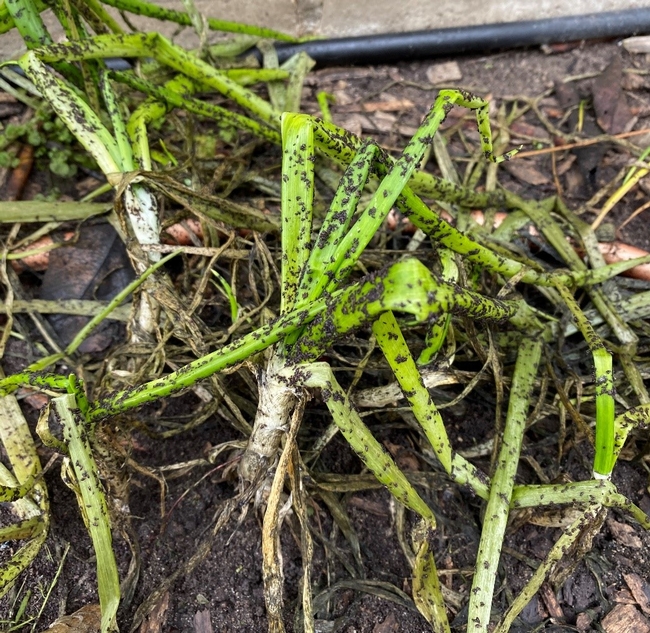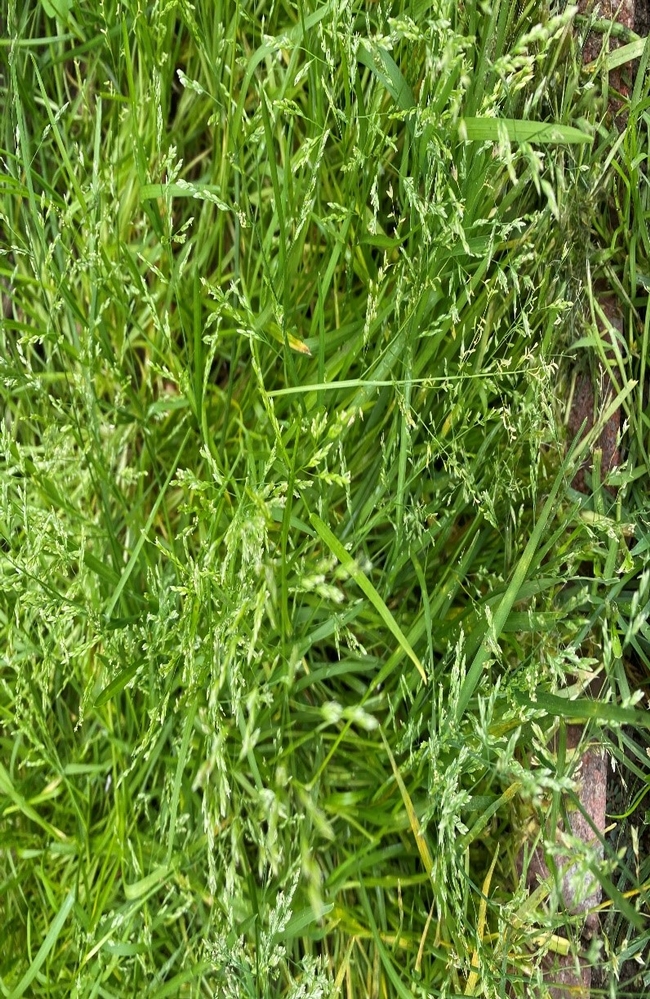Winter is finally here! Leaves have fallen or are in the process of leaving our deciduous plants naked. Sends shivers up my spine!
What's an avid gardener to do? There must be more to life than raking leaves. Growing winter crops help us stay active in the garden with the added benefit of providing vegetables and fruit for our friends and family. Pests are ready to take advantage of our weaknesses should we drop our guard and ignore their signs. Use these simple scientifically proven methods to control the following pests of the season. You may also learn of other pests you encounter this winter and learn how best to deal with them at your local Cooperative Extension via the volunteer Master Gardener program in the form of telephone hotline or website, listed at the bottom of the page.
Black Aphids are a common pest during the late fall / early winter period attacking green onions, garlic, and chives, including society chives (landscape). These aphids suck the life out of the plant while they feast up and down the leaves, reproducing parthenogenically, birthing live offspring along their way. If you catch them early you can prevent damage by washing them off with a firm stream of water. In the cooler weather you may not check your crop daily and may encounter plants covered from top to bottom with black dots as pictured above – these may require at the minimum a soapy water mix or Neem Oil mixture to salvage the crop. Be sure to follow manufacturer's directions when applying Neem Oil products. Aphids may escape and hide in the innermost leaf material surrounding the stem and bulb. If you choose to transplant these affected plants, make sure to leave the aphids behind by submerging the plant in a bucket of soapy water to suffocate the little critters. Peel back as much of the damaged leaves as possible to eliminate their hiding places. For more info, visit the UC IPM Page.
Fungus pests are hiding at this time of year. One such hidden pest waiting to rear its ugliness in the coming spring is Leaf Curl, Taphrina deformans, which typically attacks nectarines and peaches. Since the leaves are all off, now is the time to apply a preventive fungicide treatment. If timed properly, a single fall/winter treatment of copper-based fungicide can prevent leaf curl and shot hole disease! A “2-fer”!
If your trees showed symptoms last spring, be sure to treat your trees now. Don't wait to see if it disappeared by itself or your pruning removed all the infested areas. It is still there and needs treatment to stop its spread. Your fruit production will improve, and your neighbors will thank you for sharing your bounty. For more information visit the UC IPM page.
Do you recognize the plant in the picture? While this “grass” mixes well with commercial sod and can become one with your lawn, it also spreads from its wind-blown seeds and germinates heartily in the winter in our flower or vegetable gardens. Vulpia microstachys is a species of grass known by the common names Small Fescue and Small Six-weeks Grass. Native to western North America, its presence in the flower garden or crowding out your vegetables can relegate it to “pest” status. To manage this pesky grass, simply pull it out by hand or uproot it with a flat or hula hoe and remove it from the area. It can go in the compost pile if you make sure the pile heats up properly to kill off the seeds, lest you plan to spread your compost on the lawn to improve thickness of said lawn in the cooler weather. If it goes to seed before you remove it, you will get another crop with the next rain or watering. Good news – it usually only lives 6 weeks.
Visit http://sjmastergardeners.ucanr.edu or call us at 209-953-6112 with your questions regarding specific issues you may encounter in the pursuit of gardening enjoyment.


